CIVIL TECHNOLOGY GRADE 12 MEMORANDUM - NSC PAST PAPERS AND MEMOS FEBRUARY/MARCH 2017
Share via Whatsapp Join our WhatsApp Group Join our Telegram GroupCIVIL TECHNOLOGY
GRADE 12
NSC PAST PAPERS AND MEMOS
FEBRUARY/MARCH 2017
MEMORANDUM
QUESTION 1: CONSTRUCTION, SAFETY AND MATERIAL
1.1
1.1.1 Safety net/Catch net √ (1)
1.1.2 Prevents objects and debris from falling onto workers and visitors. √ (1)
1.1.3
- Where work is done on higher levels and people move below. √ (2)
- Where falling objects pose a danger to workers below. √
ANY OTHER ACCEPTABLE ANSWER
1.2 Brick force √ (1)
1.3
- Stretcher bond √
- English bond √ (2)
1.4 A closer brick is half the width of a full brick. √ (1)
1.5
- Paint the wall √
- Tile the wall √ (2)
1.6 Paint:
- Paint is much cheaper. √
- ∙ Paint lasts long if good quality paint is used.
- ∙ Paint is cleaned easily.
- ∙ Paint is quicker to apply.
Tiles:
- Tiles are expensive at first but last longer. (1)
- Tiles are easy to clean.
ANY ONE OF THE ABOVE OR ANY OTHER ACCEPTABLE
1.7 Corrugated iron sheeting √ ![]()
IBR iron sheeting √ (2)![]()
1.8 ANSWER SHEET 1.8 
ASSESSMENT CRITERIA | MARK | CANDIDATE'S MARK |
Concrete floor drawn in correct place | 1 | |
Screed drawn in correct place | 1 | |
Symbol for screed | 1 | |
Backfilling drawn in correct place | 2 | |
Symbol for back filling | 1 | |
Binding layer drawn in correct place | 1 | |
Hardcore filling drawn in correct place | 1 | |
Symbol for hardcore filling | 1 | |
DPC drawn in correct place | 1 | |
TOTAL | 10 |
(10)
1.9
1.9.1
- A - Hipped rafter/Corner rafter √
- B - Purlin √
- C - Brick wall √ (3)
1.9.2 Hipped roof √ (1)
1.10 DPC – Thin layer of plastic sheeting/membrane, bituminous felt. √ (1)
1.11 Preservatives must:
- be poisonous enough to kill insects without being harmful to humans. √
- be affordable. √
- not smell unpleasant.
- not cause corrosion of metals in the wood.
- ∙ strengthen rather than weaken the wood.
- not spoil the appearance of the wood.
- not change the dimensions or the strength of the wood. (2)
[30]
QUESTION 2: ADVANCED CONSTRUCTION AND EQUIPMENT
2.1
2.1.1 D √ (1)
2.1.2 L √ (1)
2.1.3 J √ (1)
2.1.4 H √ (1)
2.1.5 I √ (1)
2.1.6 A √ (1)
2.1.7 M √ (1)
2.1.8 E √ (1)
2.1.9 G √ (1)
2.1.10 B √ (1)
2.2
- A - Plumb bob √
- B - Spirit level/Level √
- C - Cross cut saw/Rip saw/Panel saw/Saw √ (3)
2.3
2.3.1
- Anchor bar √
- Shear bar √
- Main bar √
- Stirrup/Binder (3)
ANY THREE OF THE ABOVE
2.3.2
- Spacers √
- Concrete block/Cover depth blocks
- Steel stands/Cover depth stands
- Plastic spacers (1)
ANY ONE OF THE ABOVE OR ANY OTHER ACCEPTABLE ANSWER
2.4
- In-situ (driven) foundation piling √
- Pre-formed concrete piles √
- Driven in situ piles/Franki piles
- Steel tube caisson piles
- Short-bored piles (2)
ANY TWO OF THE ABOVE OR ANY OTHER ACCEPTABLE ANSWER
2.5
2.5.1
- A - Concrete beam √
- B - Bearer √
- C - Brace √ (3)
2.5.2
- Wedges make the striking of formwork easier. √
- Assist in setting up the formwork to the correct height. √
- Wedges make the formwork more rigid. (2)
ANY TWO OF THE ABOVE OR ANY OTHER ACCEPTABLE ANSWER
2.5.3
- Form oils prevent concrete from sticking to the formwork. √
- Form oil will ensure smooth finish of concrete surface.
- Form oils may cause discolouring of the concrete surface. (1)
ANY ONE OF THE ABOVE OR ANY OTHER ACCEPTABLE ANSWER
2.6 ANSWER SHEET 2.6 
ASSESSMENT CRITERIA | MARK | CANDIDATE'S MARK |
Steel floor track | 1 | |
Nylon anchor | 1 | |
Steel stud | 1 | |
Cladding | 1 | |
Skirting board | 1 | |
ONE label | 1 | |
TOTAL | 6 |
(6)
2.7
- The concrete will dry out quickly. √
- There may not be sufficient water in the concrete for the hydration process to continue.
- The concrete will not gain adequate strength. (1)
ANY ONE OF THE ABOVE
2.8
- If stone is not used there will be no bulk. √
- Compression strength will be compromised if stone is not used.
- If sand is not used there will be lots of voids in the concrete.
- If cement is not used there will be no hydration.
- The ingredients will not adhere to each other if cement is not used.
- If water is not used there is no hydration and the ingredients will not adhere to each other. (1)
ANY ONE OF THE ABOVE OR ANY OTHER ACCEPTABLE ANSWER
2.9 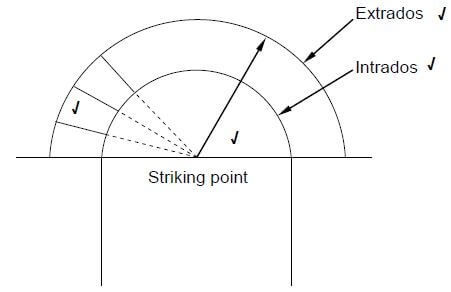
ASSESSMENT CRITERIA | MARK | CANDIDATE'S MARK |
Construction | 1 | |
Any three bricks | 1 | |
Label intrados | 1 | |
Label extrados | 1 | |
TOTAL | 4 |
(4)
2.10
- In situ cast concrete floors are more expensive. √
- In situ cast concrete floors take longer to install. √
- In situ cast concrete floors require skilled labour to install. (2)
ANY TWO OF THE ABOVE OR ANY OTHER ACCEPTABLE ANSWER
2.11
- Too expensive √
- Cavity wall is too wide and takes up too much space.
- Inner walls are not exposed to wet weather conditions.
ANY TWO OF THE ABOVE OR ANY OTHER ACCEPTABLE ANSWER(1)
[40]
QUESTION 3: CIVIL SERVICES
3.1
- P-trap √
- S-trap
- Water traps (1)
ANY ONE OF THE ABOVE
3.2 The function of anaerobic bacteria in a septic tank is to decompose the solids until nothing but sludge remains. √ (1)
3.3 ANSWER SHEET 3.3 
ASSESSMENT CRITERIA | MARK | CANDIDATE'S MARK |
External walls | 1 | |
Inner wall | 1 | |
Opening in inner wall | 1 | |
Concrete base | 1 | |
Inlet and outlet | 2 | |
Cover/Manhole | 1 | |
Any THREE labels | 3 | |
TOTAL | 10 |
(10)
3.4 √ √
- Storm water is rain, hail or snow that falls on the earth in large quantities in a short spread of time. (2)
3.5
- Sewage should not be directed into a storm water system because it is illegal √, it causes pollution √ and is a health risk. (2)
ANY TWO OF THE ABOVE OR ANY OTHER ACCEPTABLE ANSWER
3.6
- The safety valve releases excess pressure in the cylinder. √
- The safety valve is to open and release the inside pressure by discharging some of the hot water or steam. (1)
ANY ONE OF THE ABOVE OR ANY OTHER ACCEPTABLE ANSWER
3.7
- The water will overheat if the thermostat does not switch off. √
- A person may be scalded because of the very hot water.
- There may be insufficient hot water for the household if the thermostat does not switch on at the correct temperature.
- There may not be any hot water at all if the thermostat does not switch on. (1)
ANY ONE OF THE ABOVE OR ANY OTHER ACCEPTABLE ANSWER
3.8 A high-pressure geyser needs high incoming water pressure, √ whilst a gravity geyser will be used where the water pressure is low. √ (2)
3.9 Black backgrounds absorb heat the best. √ (1)
3.10 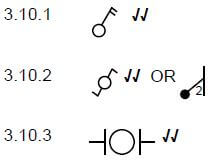 @ (2)
@ (2)
3.11 Elbow fittings are placed at the end of a pipe where there is a change in direction of flow of water. √ T-coupler/T-fitting is placed between pipes where water supply must be divided. √ (2)
3.12 If a pressure-reducing valve is not fitted:
- there will not be a constant downstream pressure to the installation. √
- water temperature in a shower may be affected if another tap is opened elsewhere in the system.
- hot water may be forced back through the geyser into cold water pipes due to the unbalanced pressure in the system.
- the high pressure of the municipality will not be lowered
ANY ONE OF THE ABOVE OR ANY OTHER ACCEPTABLE ANSWER(1)
[30]
QUESTION 4: MATERIALS AND QUANTITIES
4.1 4.1.1 Unit √ (1)
4.1.2 780/780 mm √ (1)
4.1.3 44/44 mm √ (1)
4.1.4 2 √ (1)
4.1.5 60/60 mm √ (1)
4.1.6 580/580 mm √ (1)
4.1.7 Bottom rail/Sash bottom rail √ (1)
4.1.8 150/150 mm √ (1)
4.2
4.2.1 C √ (1)
4.2.2 D √ (1)
4.2.3 C √ (1)
4.2.4 D √ (1)
4.2.5 B √ (1)
4.3 Used for fixing timber/steel to brickwork, concrete and natural stone. √ It is used where medium to heavy duty fixings are required, such as steel to brick or concrete, railings, staircases, gates.
ANY ONE OF THE ABOVE (1)
ANSWER SHEET 4.4
4.4.1
A | B | C | D | |
Area to be plastered: | ||||
Total outside length of short walls: | ||||
= 2/3 000 mm | ||||
= 6 000 mm √ | ||||
Total outside length of long walls: | ||||
= 2/7 000 mm | ||||
= 14 000 mm √ | ||||
Total outside length of all the walls: | ||||
= 6 000 mm + 14 000 mm | ||||
= 20 000 mm √ | ||||
| (3) | ||||
1/ | 20,0 | Outside area of walls before deductions: | ||
2,95 √ | 59,0 m² √ | (2) | ||
1/ | 0,9 | Area of window opening: | ||
0,6 √ | 0,54 m² √ | (2) | ||
1/ | 2,1 | Area of door opening: | ||
0,9 √ | 1,89 m2√ | (2) | ||
Total wall area to be plastered: | ||||
√ √ √ 59,0 m² – 0,54 m² - 1,89 m² | ||||
= 56,57 m² √ need to be plastered | (4) |
4.4.2
Volume of plaster needed: | ||||
1/ | √ 56,57 m2 | |||
√ 0,015 m | 0,85 m2√ | (3) |
[30]
QUESTION 5: APPLIED MECHANICS
5.1
5.1.1 450 mm² √ (1)
5.1.2 3 600 mm² √ (1)
5.1.3 2 700 mm² √ (1)
5.1.4 5 850 mm² √ (1)
5.1.5 30 mm √ (1)
5.1.6 90 mm √√ OR 60 mm + 30 mm √ = 90 mm √ (2)
5.1.7 30 mm √ (1)
5.2 ANSWER SHEET 5.2 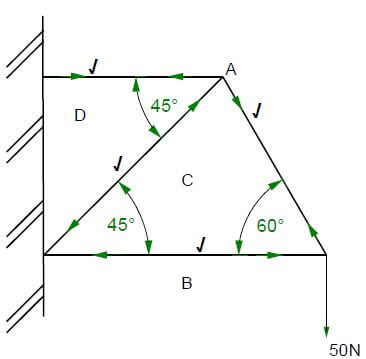
SPACE DIAGRAM 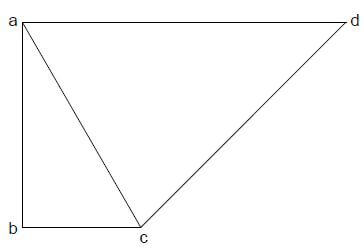
VECTOR DIAGRAM
SCALE 1 mm = 1 N
USE A MASK TO MARK THIS QUESTION
MEMBER | NATURE | MAGNITUDE |
AC | Tie √ | 54,5 N √ |
BC | Strut √ | --- |
CD | Strut √ | 67 N √ |
DA | Tie √ | --- |
(6)
Tolerance of 1 N to either side
NOTE: Markers are to measure the members from the force diagram on ANSWER SHEET 5.2 in the question paper. Use scale 1 mm = 1 N.
ANSWER SHEET 5.3
5.3.1 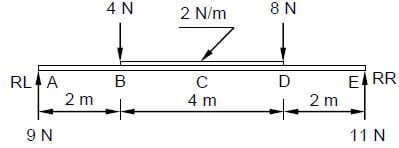
SPACE DIAGRAM 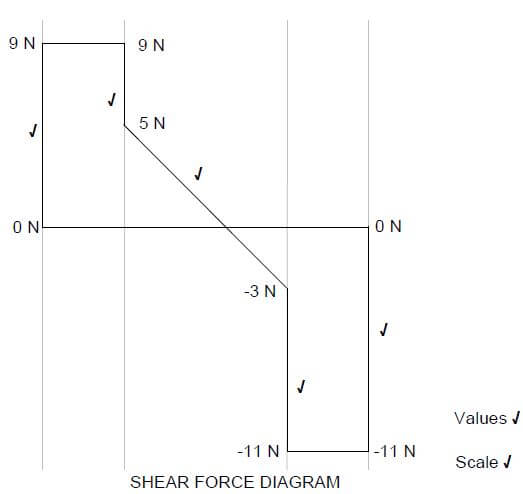
SHEAR FORCE DIAGRAM
ASSESSMENT CRITERIA | MARKS | CANDIDATE'S MARKS |
Drawing correct | 5 | |
Indicate four or more values of shear forces on drawing | 1 | |
Correct application of scale | 1 | |
TOTAL | 7 |
(7)
NOT TO SCALE: USE A MASK TO MARK THIS QUESTION
5.3.2 Calculated from the left:
BMc = (9 x 4) - (4 x 2) - (4 x 1) √
= 36 - 8 - 4 √ = 24 Nm √
OR
Calculate from the right:
BMc = (11 x 4) - (8 x 2) - (4 x 1)
= 44 - 16 - 4
= 24 Nm (3)
[30]
QUESTION 6: GRAPHICS AND COMMUNICATION
ANSWER SHEET 6.1
NO. | QUESTIONS | ANSWERS | MARKS |
1 | Name the scale used for the site plan. | 1:200 √ | 1 |
2 | State the colour that you would use to shade new buildings on a site plan. | Red √ | 1 |
3 | Identify number 1. | Inspection eye √ | 1 |
4 | What is number of the plot on which the house will be built? | 60 √ | 1 |
5 | Identify number 3. | Sink √ | 1 |
6 | Determine the distance from the boundary line to the proposed dwelling on the western side of the building. | 5 000 mm/5 m √ | 1 |
7 | Determine the distance between the building line and the building on the northern side of the building. | 3 000 mm/3 m √ | 1 |
8 | In which street is the entrance to the site located? | Thambo Street √ | 1 |
9 | Draw the roof line of a gable roof for the building. | 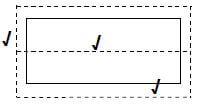 | 3 |
10 | Calculate the total area of the building in square metres. | 204 m² √ | 2 |
11 | If the area of the site is 750 m², what percentage will the building occupy on the site? 29,2% OR 27,2% OR 25,2% | 27,2%√√ | 2 |
TOTAL | 15 |
ANSWER SHEET 6.2
ASSESSMENT CRITERIA | MARKS | LM | ASSESSMENT CRITERIA | MARKS | LM |
External Walls | 4 | Bath | 1 | ||
Internal Walls | 5 | Dimensions | 2 | ||
Windows | 4 | Application of scale One or two incorrect = 3 Three or four incorrect = 2 More than five incorrect = 1 No measurement correct = 0 | 3 | ||
Doors | 4 | ||||
Wash tub | 1 | ||||
Water closet | 1 | ||||
TOTAL | 25 |
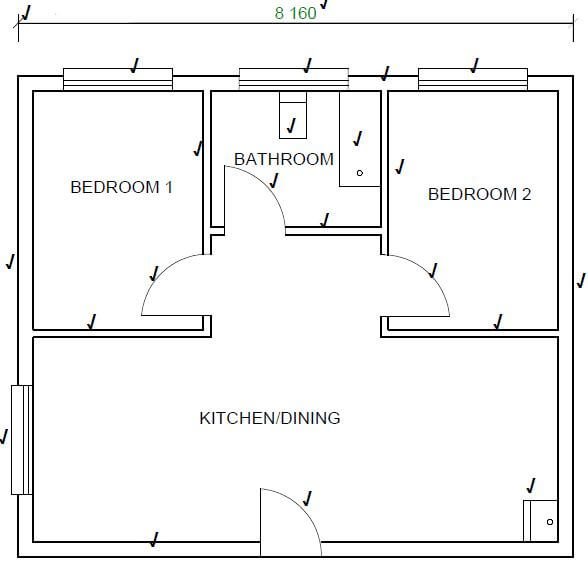
ACCURACY √ √ √
NOT TO SCALE: USE A MASK TO MARK THIS QUESTION
[40]
TOTAL: 200